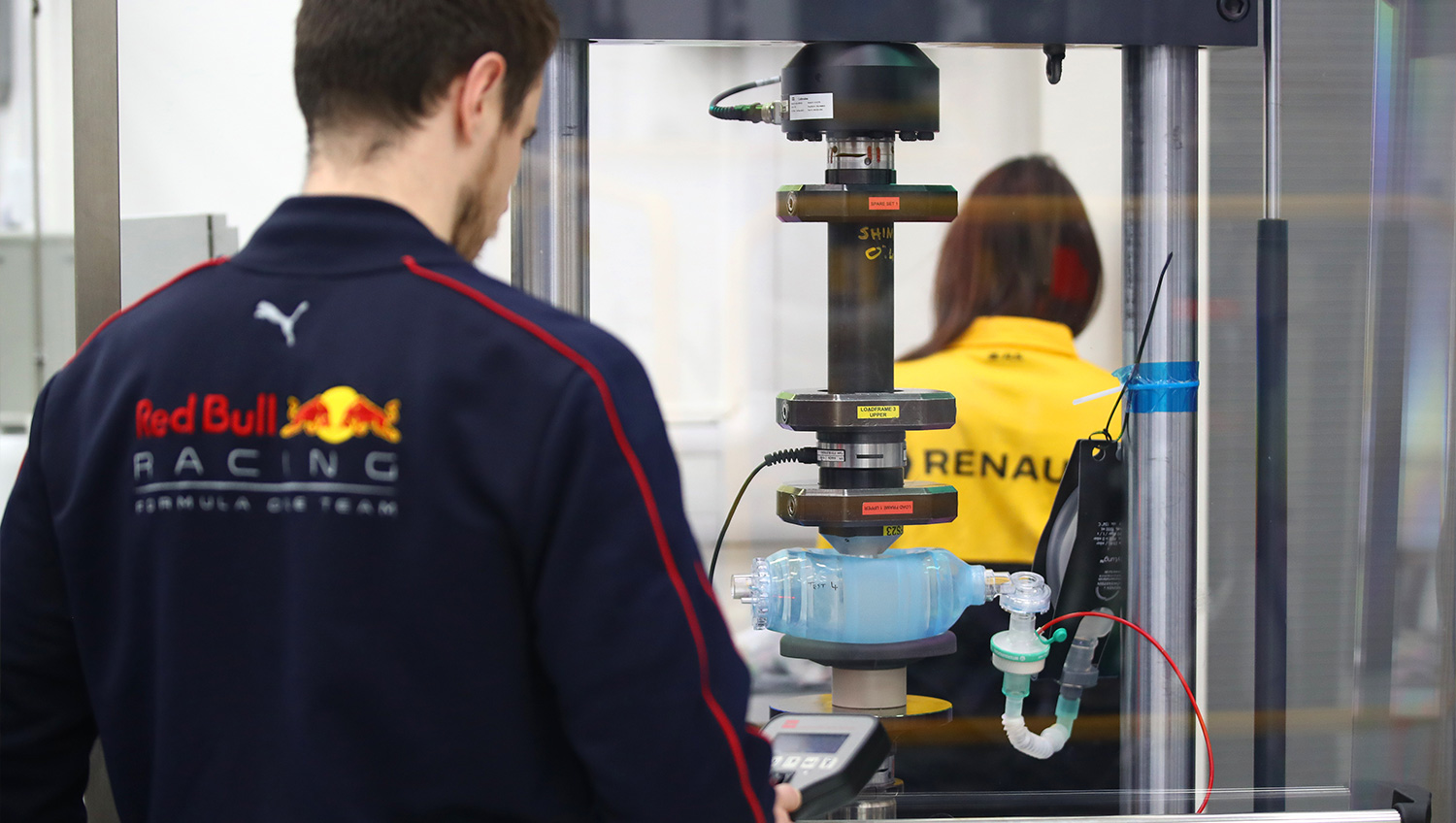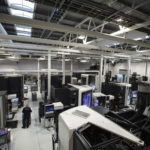Ventilator Challenge UK
Gearing Up For The Re-start
June 4, 2020
On Monday, for the first time in 66 days, our Milton Keynes factory opened its doors for F1 work as we begin preparations for a hugely anticipated start of the 2020 Formula One Championship.
The factory shutdown, which forbids any Formula One related activity, was brought forward from its usual August timeframe to March in order to cope with the lockdown resulting from the COVID-19 global health pandemic. However, a little over nine weeks later, we’re gearing up to go racing again, and while we’ve had to implement a range of new procedures to keep everyone safe, the factory is once again a hive of industry, and from design to composites, fabrication to the race bays, work is once again focused on making the RB16 as competitive as possible.
But, while the shutdown meant we couldn’t engage in F1-related activity, it doesn’t mean the factory has been entirely silent over the past two months. As the COVID-19 pandemic worsened, we turned our engineering skill towards a race of a different kind – the one to try and help save lives. Though, in the end, the evolving nature of the crisis and better understanding of the treatment required meant a halt was called to our work, we’re still enormously proud of how we and our partners in the Project Pitlane alliance were able to develop a spark of genius from one junior doctor into an innovative new ventilator device for the NHS in record time.
The brainchild of Dr Alastair Darwood, a member of the NHS England Clinical Entrepreneur Programme, and remarkably, still a Junior Doctor, the BlueSky ventilator is a simple positive pressure ventilator designed for short-term emergency ventilation in trauma and critical care. The UK government identified the ventilator as potentially important in the fight against COVID-19 as it was easily scaleable and had the potential to be mass produced with relative ease, compared to the more complex ventilators already used in critical care settings.
However, despite the cleverness of Dr Darwood’s invention, it was still just a concept and to get the ventilator from concept to production would, in normal circumstances, take a considerable amount of time – a commodity in short supply in a pandemic situation. To change that, Professor Tony Young OBE, Director of Medical Innovation at ARU put Dr Darwood in touch with Innovate UK and in turn with the UK’s F1 teams.
And if there’s one thing F1 teams excel at it’s lightning-quick development and within just two days of the first meeting to analyse the BlueSky ventilator concept at our Milton Keynes factory on 22 March, the first prototype was ready for extensive rig testing leading to the pre-production prototype and ultimate MHRA sign-off.
Our designers and engineers, alongside colleagues at Renault led the charge with mechanical design, manufacturing, electronics and control systems. The Team and Haas also collaborated on mechatronics and mechanical interface, with the other UK teams each playing their part. The Project Pitlane collaboration pooled their extensive network of suppliers within motorsport and the automotive industry including Nissan.
Along with the design task the factories were also re-purposed for mass manufacture of medical grade equipment. Race car assembly bays and composite clean rooms were rapidly re-purposed under the scrutiny of the medical manufacture regulators.

The design and execution of the initial prototype was so impressive that an initial order of units was placed by the UK Government with manufacturing capability being scaled up to provide for 30,000 units if required.
However, as the crisis evolved and the NHS better understood the virus it became clear that enough capacity would exist within the NHS with the existing equipment and the BlueSky project was halted.
Despite the brakes being put on the BlueSky ventilator just days before mass production began, all those involved in the project are hugely proud of the speed at which a clever design became reality thanks to F1’s incredible ability to innovate.
“This project has been an incredible experience and a phenomenal collaboration between many different teams,” said Dr Darwood of BlueSky’s development. “A group of F1 engineers took my initial design and rapidly produced a pre-production prototype capable of mass manufacture and adherence to the rigorous demands of a COVID-19 ventilator. I am deeply honoured to be a part of this process and humbled by the dedication and commitment shown by every member of our team. I’ve seen the engineering skill behind the F1 cars first-hand now; a huge amount of engineering prowess goes into every single element of the car, and their fundamental design skills and problem-solving ability is exceptional.”
And now with, we hope, the worst of the crisis behind us, that engineering prowess can once more be turned towards what we love and do best – building racing cars, making them quick and then quicker again and in the process hopefully bringing back even more silverware to our newly re-opened, race-ready Milton Keynes home.
Project Pitlane
Formula 1 Statement: Project Pitlane
March 27, 2020
Project Pitlane – Seven UK-based Formula 1 teams making significant progress towards UK Government’s call for assistance with the manufacture of medical devices to help in the treatment of COVID-19 patients.
As confirmed today by The UK Government, during the past two weeks a collective of seven UK-based Formula 1 teams,* their respective technology arms and Formula 1 has made significant progress in defining and coordinating its response to the UK Government’s call for assistance with the manufacture of medical devices to help in the treatment of COVID-19 patients.
The seven teams’ combined efforts, termed ‘Project Pitlane’, are part of a UK industry-wide effort to manufacture and deliver respiratory devices to support the national need.
Following decisions taken this week by the UK Government, Project Pitlane is focussed on three workstreams. These workstreams vary in scope from reverse engineering existing medical devices, to support in scaling the production of existing ventilator designs as part of the VentilatorChallengeUK consortium, to the rapid design and prototype manufacture of a new device for certification and subsequent production.
In each instance, Project Pitlane will pool the resources and capabilities of its member teams to greatest effect, focusing on the core skills of the F1 industry: rapid design, prototype manufacture, test and skilled assembly. F1’s unique ability to rapidly respond to engineering and technological challenges allows the group to add value to the wider engineering industry’s response.
The focus of Project Pitlane will now be on coordinating and answering the clear challenges that have been set. The seven teams remain ready to support in other areas requiring rapid, innovative technology responses to the unique challenges posed by the COVID-19 pandemic.
* Aston Martin Red Bull Racing, BWT Racing Point F1 Team, Haas F1 Team, McLaren F1 Team, Mercedes-AMG Petronas F1 Team, Renault DP World F1 Team, ROKiT Williams Racing
Project Pitlane
